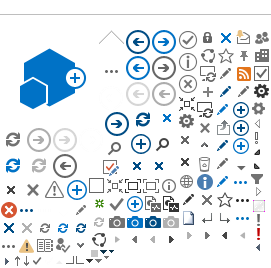High Temperature Test
Facility
A few years ago, the “Coupled Neutronic/Thermal-Fluid Benchmark of the Modular High Temperature Gas-cooled Reactor (MHTGR) 350 MW Core" was launched with the goal to perform code-to-code comparisons for a prismatic modular high-temperature gas-cooled reactor design. This benchmark successfully identified differences between solutions of different multi-physics codes (Coupled Neutronic/Thermal-Fluid). In the meantime, several national laboratories (INL. ANL, CNL) along with several commercial entities (Kairos, X-Energy, Radian, BWXT) expressed interest in a simpler, single physics (thermal hydraulics), but still integral effects benchmark for advanced gas cooled reactor code validation that includes comparison to experimental data.
The High Temperature Test Facility (HTTF) at Oregon State University (OSU) is a scaled integral effects experiment designed to investigate transient behavior in high-temperature gas-cooled nuclear reactors with prismatic fuel and reflector blocks. It is a one-quarter-scale model of the General Atomics' MHTGR. Several tests have been completed at the HTTF, including depressurized conduction cooldown (DCC) and pressurized conduction cooldown (PCC) transients for which high-quality measured data is available. This data would be suitable for a thermal hydraulics code validation benchmark for codes for gas cooled reactor simulations.
Scope and proposed work:
The idea is to define a multi-staged (3 exercises) code-to-code-to-data thermal hydraulics code validation benchmark using available HTTF data. INL would take the lead on the benchmark organization and compilation of the exercises as well as compile solutions form different participants.
Exercise 1: Fixed boundary conditions.
The HTTF facility is equipped with more them 500 instruments. While these instruments provide high fidelity data for temperature distributions and evolutions during investigated transients, some of the boundary conditions (in particular helium mass flow rate in the primary loop and thermal properties for the core ceramic) have significant uncertainties. The first proposed exercise will include well defined boundary conditions so that all participants can establish a “base solution" that can be compared “apples-to-apples" to other participants solution. This will help identify differences between solutions of different codes.
Exercise 2: Best estimate boundary conditions.
In the second exercise, participants can use their best estimation of the boundary conditions, e.g. instead of following prescribed helium mas flow rates and valve positions, they can implement models of the helium blower and valve control systems to determine helium mass flow rate and valve position, respectively. This exercise will allow to compare different code solutions to measured data as assess output uncertainties (code validation).
Exercise 3: Error scaling form HTTF to MHTGR.
During the design of any experiment, the designer must assess how close the experiment reproduces the physics compared to the full-size installation the experiment attempts to represent.
One of the challenges of this step is to bound the error prediction of a model, when applied to a facility yet to be built, starting from the comparison of the model prediction with a set of experimental results. This problem is the validation extrapolation step. Since the HTTF is a scaled-down model of the MHTGR (for which geometry and model descriptions are available through the mentioned MHTGR benchmark), the combination of HTTF models with measured data and MHTGR models provide an opportunity to assess the validation extrapolation for the different codes. The solution of this problem is the quantification of the uncertainty in a simulation for the MHTGR plant knowing the uncertainty of a simulation for the HTTF facility (assessed in Exercise 2). Participants can provide solutions using their scaling methodologies such as Dynamic System Scaling (DSS), representativity, Physical Coverage Mapping (PCM), etc.


